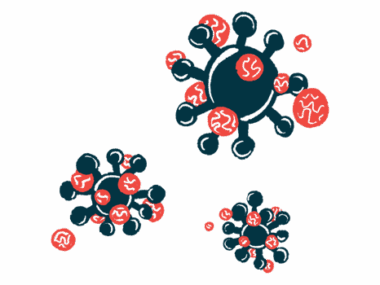Plasma exchange, rituximab helped child diagnosed with severe aHUS
Case underscores importance of early intervention, said researchers
Written by |

Early treatment with plasma exchange, or plasmapheresis, followed by the immunosuppressant rituximab helped a 2-year-old girl who was diagnosed with a case of severe atypical hemolytic uremic syndrome (aHUS), a study in India reports.
The report showcases how “young children with [aHUS] may present with a severe clinical course necessitating early intervention. The lack of genetic analysis facilities in severe cases should not hinder the timely initiation of plasmapheresis to prevent further injury and progression to chronic kidney disease,” the researchers wrote in “A Severe Form of Atypical Hemolytic Uremic Syndrome in a Two-Year-Old Girl: A Case Report,” in Cureus.
aHUS, a form of thrombotic microangiopathy (TMA), is marked by the destruction of red blood cells (RBCs) more quickly than they’re produced, called hemolytic anemia, thrombocytopenia, or low levels of platelets, and acute kidney failure.
The disease is driven by an abnormal activation of the complement system, a set of more than 50 proteins that contribute to the body’s natural immune defenses. In India, about 50% of children with aHUS have self-reacting antibodies against complement factor H (CFH), but reports show mutations in complement-regulating genes in 60% of patients.
While the standard treatment for children without anti-CFH antibodies is Soliris (eculizumab), “due to cost and accessibility issues in India, plasmapheresis or plasma infusions often serve as alternatives.” In plasma exchange, disease-causing antibodies are removed from the bloodstream.
Reaching aHUS diagnosis
The girl was first seen in the hospital in March 2023 with swelling around the eyes, fluid retention in her feet and ankles, and low urine output. She showed an unusual lack of energy and mental alertness on examination, and had high blood pressure and a fast heartbeat.
Blood work showed severe acute kidney injury, high potassium levels, too much acid in her blood, called metabolic acidosis, and severe anemia with low levels of the hemoglobin protein, which carries oxygen in red blood cells.
The girl was given immediate peritoneal dialysis for kidney failure and a blood transfusion. In peritoneal dialysis, fluid is inserted into the abdomen to remove waste from the blood.
Once she was stable, physicians examined her to determine the cause of the acute kidney injury.
The girl had blood and protein in her urine, and tests revealed red blood cell fragments, called schistocytes, in a blood smear. Her complement and platelet levels were normal. She tested negative for self-reacting antibodies that mark ANCA-associated vasculitis (AAV), but was positive for antinuclear antibodies (ANA), a hallmark of several autoimmune diseases.
Her urine output was still low after 10 days and she developed rapidly worsening glomerulonephritis, or inflammation and damage to the kidneys’ filtering units (glomeruli). As a result, she started treatment with the corticosteroid methylprednisolone for three days, followed by prednisolone.
Further blood tests showed a decrease in hemoglobin and a gradual onset of thrombocytopenia.
A kidney biopsy confirmed TMA, with 59% of glomeruli showing restricted or reduced blood flow and a shrunken appearance. Moreover, her blood vessels were blocked and fragmented RBCs in the wall of the glomeruli were visible.
Based on the biopsy findings, the girl was diagnosed with aHUS and began treatment with the oral immunosuppressant mycophenolate mofetil, followed by seven plasma exchange sessions.
Treatment with plasma exchange, rituximab
No immediate clinical improvements were observed. Her high blood pressure worsened, requiring multiple oral medications. She had a hypertension emergency that affected her brain and was given treatment into the vein with nitroglycerin, which causes blood vessels to relax and widen, lowering blood pressure.
A brain CT scan showed signs of a posterior reversible encephalopathy syndrome (PRES) with small blood clots. PRES, which arises due to swelling in parts of the brain, manifests as headaches, seizures, and visual problems.
The girl was given a single rituximab dose, which improved her kidney function in two days, as shown by a gradual increase in urine output and improved kidney function. Her hemoglobin and platelet counts normalized, and blood work confirmed she was negative for self-reacting antibodies targeting targeting CFH.
A genetic analysis was recommended, but wasn’t performed due to financial constraints. The girl was discharged after a month with a prescription of oral prednisolone and mycophenolate mofetil. In follow-up consultations, her condition was stable, with no signs of red blood cell destruction, thrombocytopenia, or kidney dysfunction.
Overall, “early initiation of plasmapheresis within 24 hours is crucial for a desired response in severe [hemolytic uremic syndrome] cases,” the report reads.






